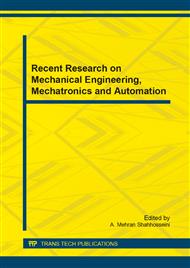p.15
p.21
p.27
p.32
p.36
p.41
p.48
p.53
p.58
Earthquake-Response Analysis of Long-Span Cable-Stayed Bridge under Uniform and Non-Uniform Excitations
Abstract:
Earthquake is a kind of natural disaster which is difficult to predict and the damage degree is very great, occurrence of the strong motion often leads to the tremendous life and property loss. Bridge is very important lifeline engineering and it is very necessary to conduct the comprehensive and systemic investigation on the bridge aseismic. In this paper, the FEM model of a long-span cable-bridge was established; the dynamic characteristic and nonlinear seismic responses under uniform and non-uniform excitations of it were systematic studied. The results show that: 1) the basic cycle of it is about 8.881s. Its first mode of vibration is longitudinal floating mode, which is favorable to the earthquake-response of structures. 2) Its former 40 rank frequency are located between 0.1~2Hz which is avail to the condition of traffic condition.3) the geometric nonlinearity has much influence on the response of this kind of bridge.4) the seismic responses are sensitive to the frequency spectra of the input earthquake wave. 5) The traveling wave excitations are unfavorable to the design of tower and the main girder when considering the three orthogonal seismic wave input. In order to get correct results, artificial seismic wave of the bridge address is necessary to the time-history analysis.
Info:
Periodical:
Pages:
36-40
Citation:
Online since:
July 2014
Authors:
Price:
Сopyright:
© 2014 Trans Tech Publications Ltd. All Rights Reserved
Share:
Citation:


